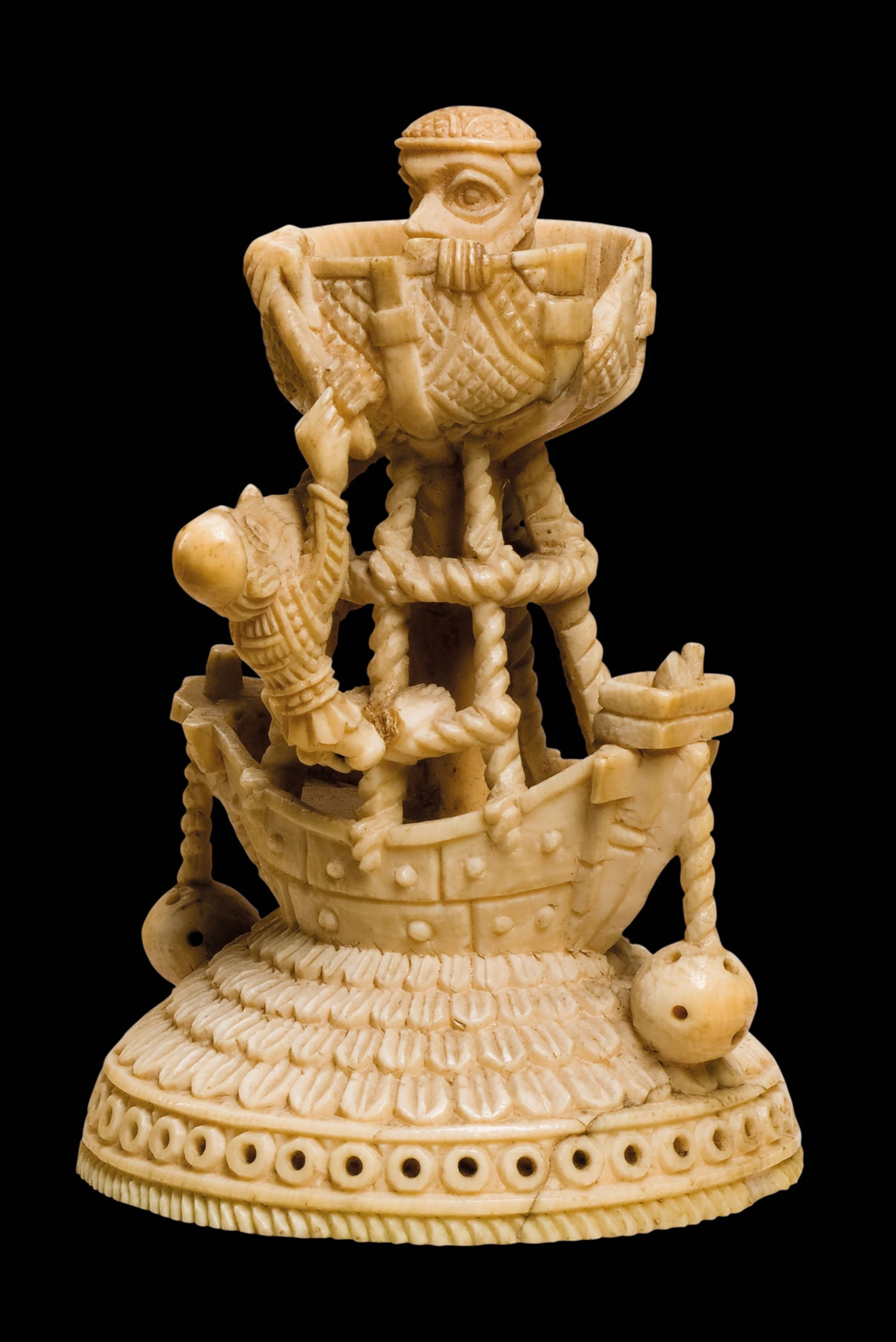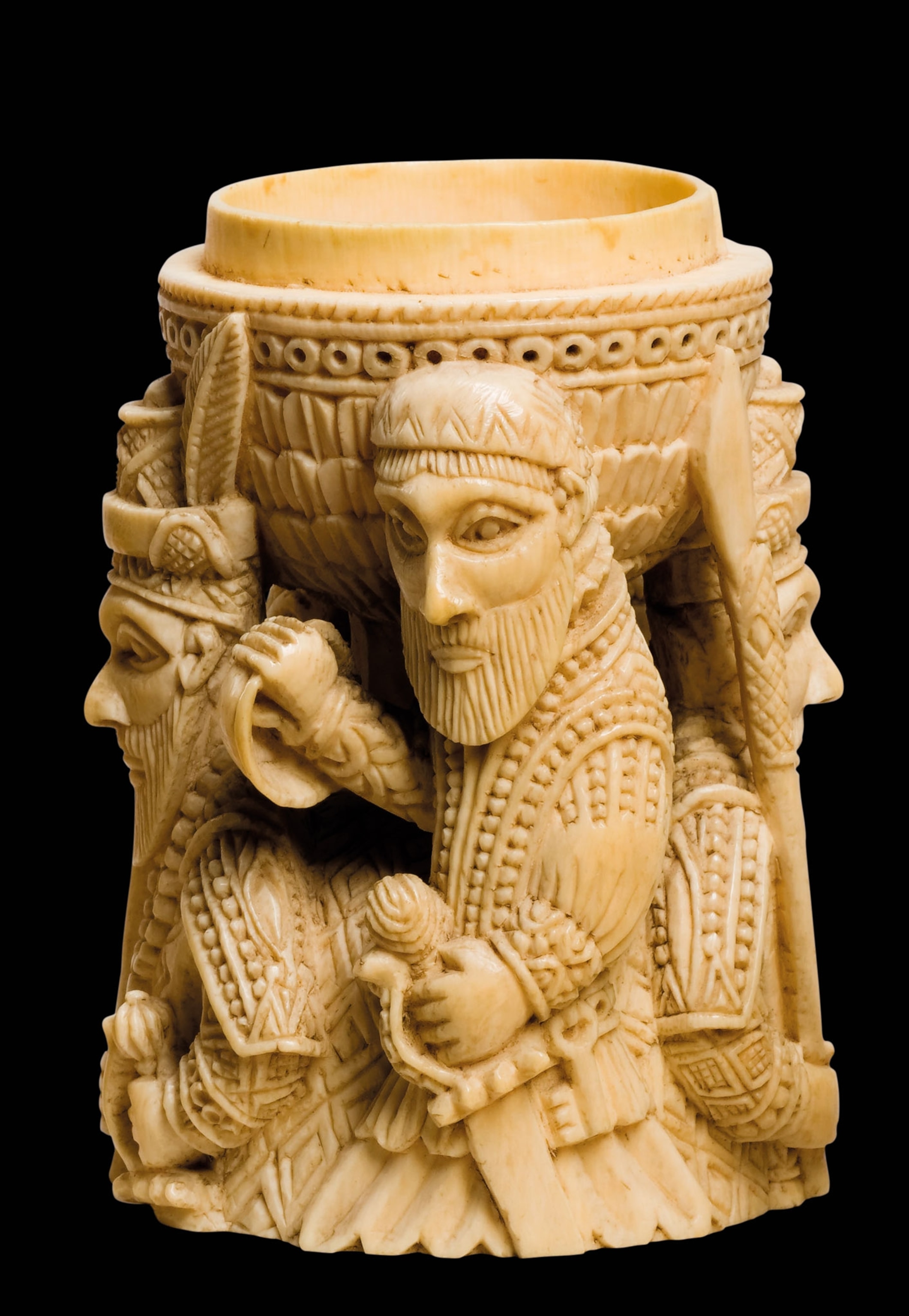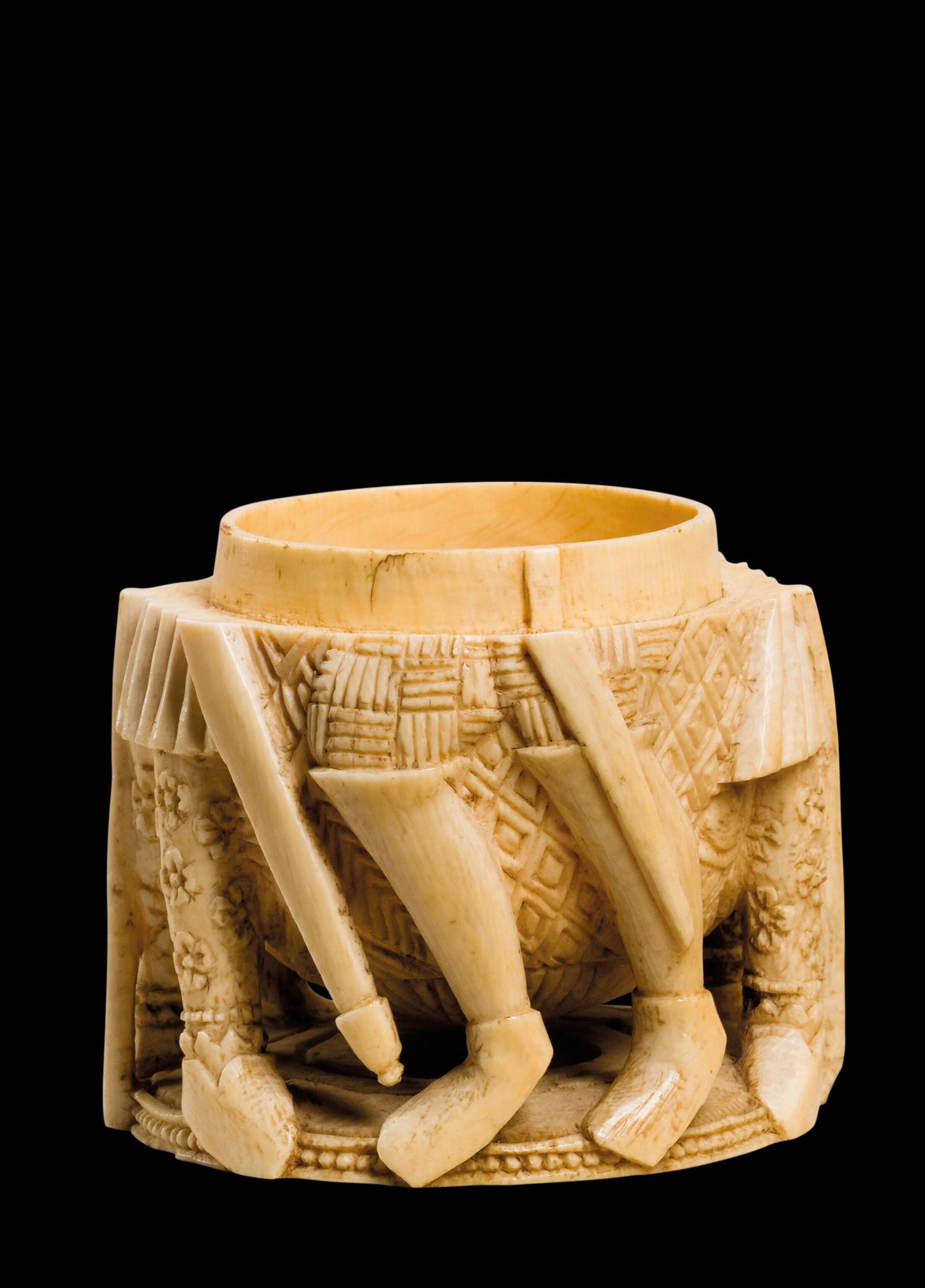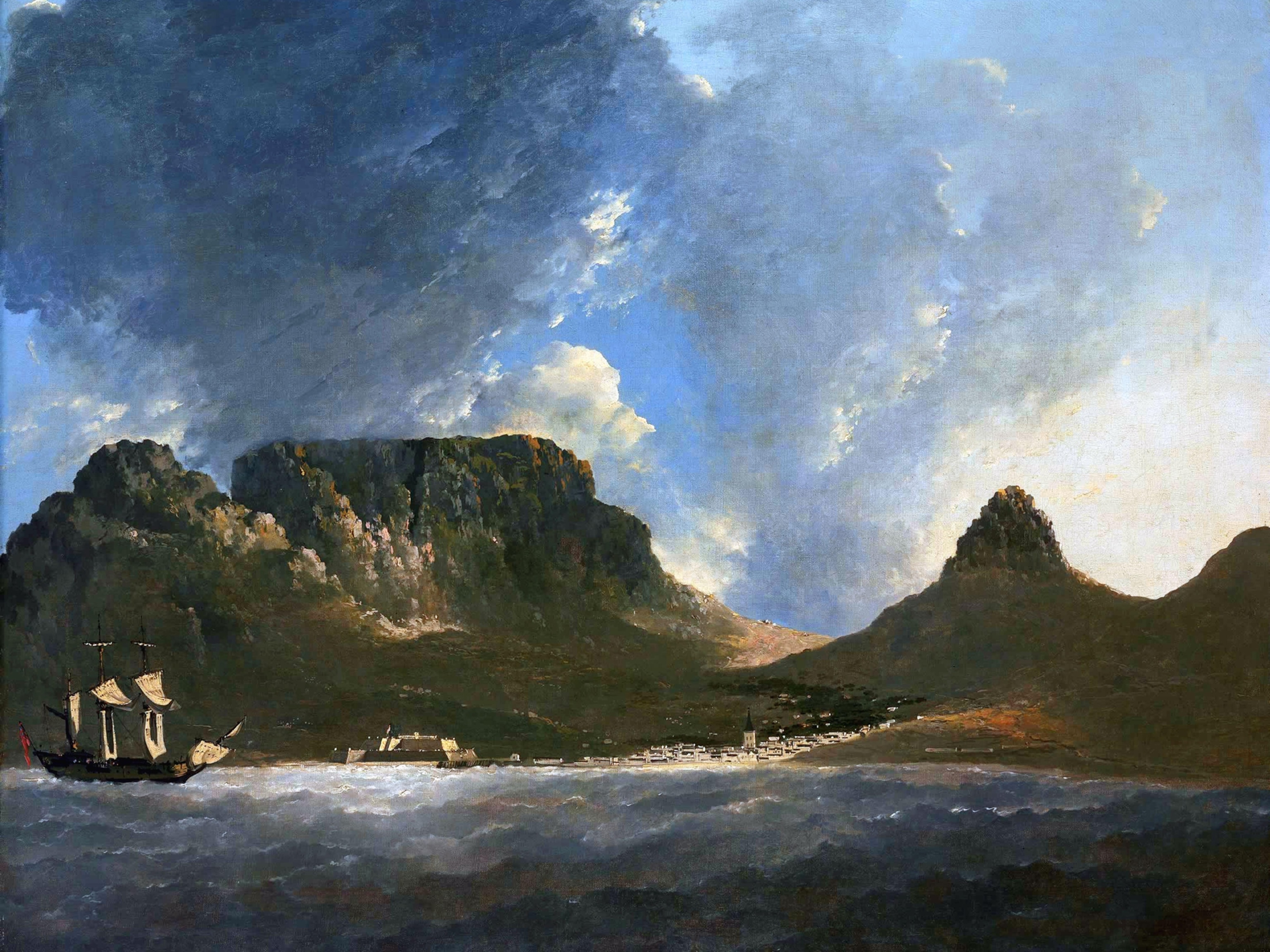This ivory relic reveals the colonial power dynamic between Benin and Portugal
As a display of his strength, the king of this West African kingdom allowed his artisans to create ivory saltcellars for Portuguese merchants in the 1500s.
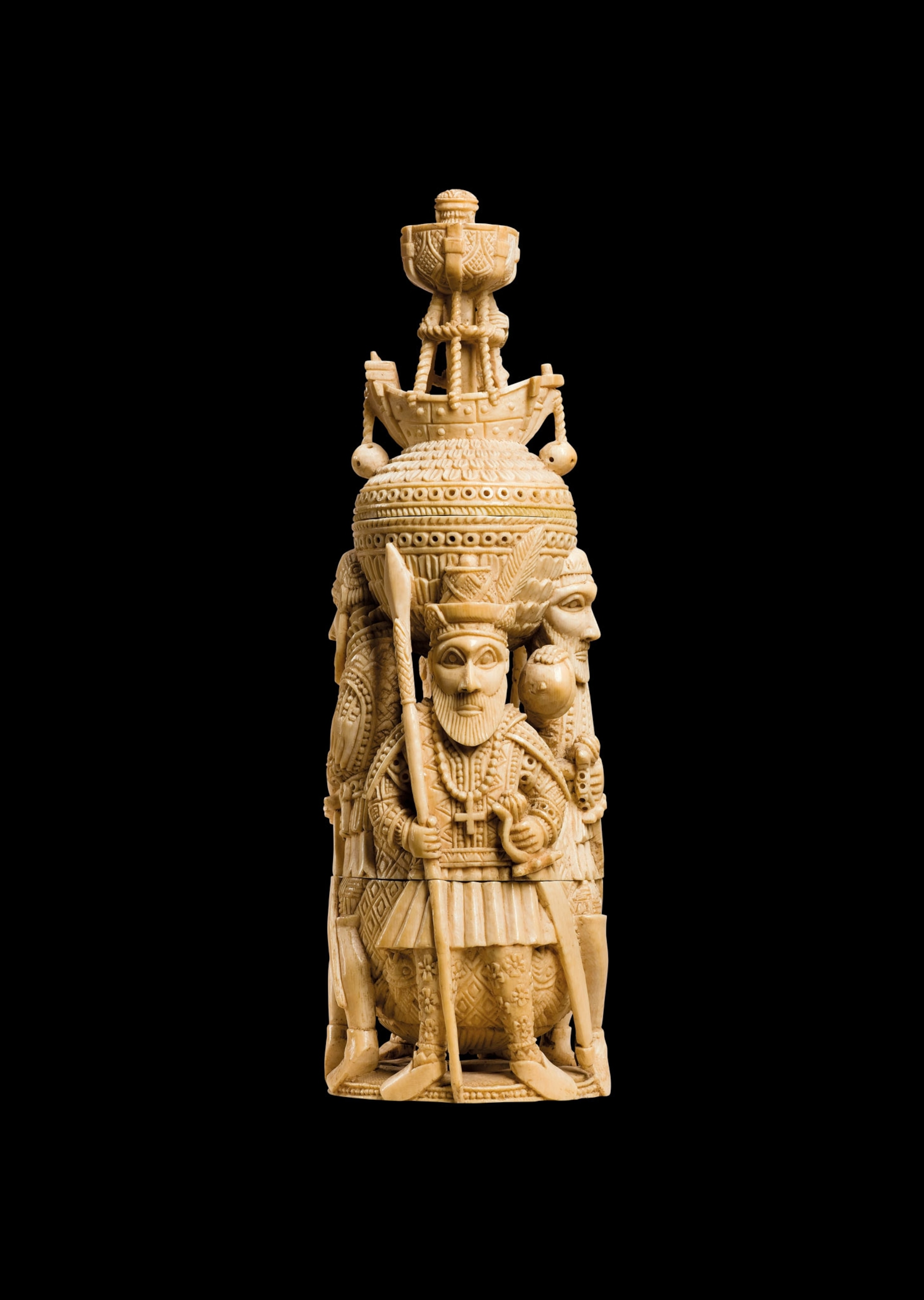
Carved from an elephant tusk, an intricate ivory saltcellar stands only 10 inches high, but its myriad details make a massive impact. Four European males—two richly attired men and their servants—support a receptacle for salt, which is in turn crowned by a ship. Housed today in Paris, France’s Quai Branly Museum, the saltcellar was fashioned around the 16th century by the highly trained artisans in Africa’s kingdom of Benin (in what is modern Nigeria).
According to Kathy Curnow, associate professor of African art history at Cleveland State University, saltcellars like this one were made by a small group of artists (six or seven men) who belonged to a hereditary, male-only guild of ivory carvers. Their highly sought skills were passed down through the generations through demanding apprenticeships: “Growing up watching their elders’ techniques gave them a facility with ivory that surpassed that of contemporary European artists who had less access to this material,” Curnow said. (Discover the human toll from modern-day ivory poaching.)
In 1485 Portuguese traders became the first Europeans to contact the kingdom of Benin, one of the oldest and most highly developed states in West Africa. Benin’s kings were known as obas, who held court at Edo, later called Benin City (located about 200 miles east of modern Nigeria’s largest city, Lagos).
Obas controlled what could be traded to the Europeans, and his permission was necessary for to merchants to trade with Benin. In the 15th and 16th centuries, the obas traded enslaved people, leopard skins, and pepper with the Portuguese for firearms, cloth, cowrie shells, coral, and alcohol. (The enslaved people who landed in colonial Virginia in 1619 came from another West African kingdom.)
Among the goods the Portuguese also sought were beautiful carved items of ivory made by Benin’s artisans. The oba allowed his craftsmen to fulfill Portuguese requests for ivory souvenirs, in the form of carved saltcellars, spoons, and hunting horns—the first pieces of African art produced for sale abroad as exotic objects. This saltcellar is one of four similar ivory pieces that are held in different collections around the world, including the Metropolitan Museum of Art and the British Museum, as exemplary pieces that highlight the skill and workmanship of Benin’s artists. (Here's how the bronze Benin statues are reigniting debate over who has the right to own and display Africa's heritage.)
